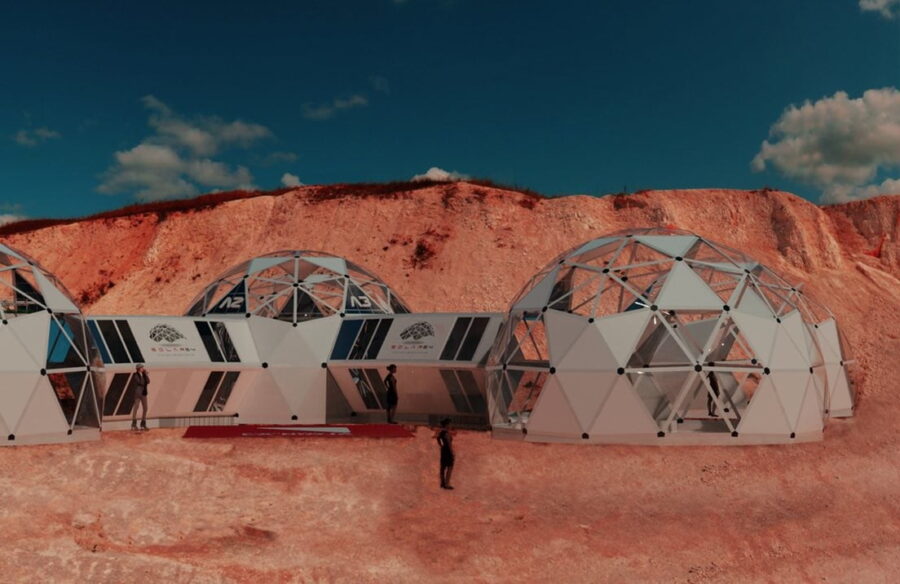RIO DE JANEIRO, BRAZIL – The Los Colorados nature reserve, located in the Argentine province of La Rioja (northwest), is a barren wasteland, with an irregular relief and a very peculiar feature: an intense red color due to the high concentrations of iron on its surface.
These peculiarities make the park a perfect place to simulate the conditions of life on Mars from Earth, an objective that the “Solar54” project will pursue by constructing a scientific base that will bring the colonization of the red planet closer.
When ready, this base will become the first of its kind in Latin America and the eleventh in the world, according to Ayelen Ebene, manager of “Solar54” and director of Innovation at FanIOT, a nanotechnology company based in the province of Misiones.

“The environment of Los Colorados is one of the most similar to the surface of Mars on Earth. This plays a very important role in the psychological aspect of the people in “Solar54″ doing what is known as analogous missions: scientists who live in the Solar infrastructure for a certain time in isolation”, says one of the project leaders.
PENTAGONS AND HEXAGONS
Promoted with the collaboration of the provincial government of La Rioja, the intention of “Solar54” is to establish, in the middle of the Los Colorados reserve, an area of about five hectares composed of a system of mobile geodetic modules.
One of the main novelties of this base is the construction method of the different domes, based on the making of pentagonal and hexagonal “basic units”, which are manufactured in the provincial capital and then sent to the park.
Now, how to erect these identical domes on Mars? As the transfer of material through space is, at present, an impractical reality, the construction of the base would be carried out by small robots, which would work autonomously to leave everything ready before the arrival of humans on the red planet.
“What “Solar54″ proposes is a robotic construction system, which consists of a robot that, using the soil of Mars, together with high pressure and certain vegetable oils, could manufacture these basic construction units and then transfer them to another robot to assemble them,” Ebene explains.
WORK ON THE BASE
In its first stage, which will be completed by the end of this year, “Solar54” will make available to the scientific and aerospace community a total of six domes: three for laboratory tasks (plant research, development of nanosatellites, and mission control) and three others for daily life, with rooms, a kitchen-dining room, and a recreation area.
“For all similar missions, we are aiming for between ten and twenty scientists who can live there in isolation for the period they consider appropriate,” says the project manager, who insists on the “interdisciplinary” nature of the colonization of Mars.
“Both soft and hard sciences have a fundamental role in colonization because sociology also comes into play: how this community of first colonists will live together, how they will develop their activities. It’s a combination of a lot of knowledge that can be developed within Solar,” he stresses.
The spirit of “Solar54” does not rest solely on the analogous missions since the intention of those in charge is to turn this base into a scientific and technological pole of attraction, attracting the attention of both university students and entrepreneurs in the aerospace industry who want to have their own dome.
Those in charge of “Solar54” took advantage of the Satellite 2022 fair, held last March in Washington, to present this initiative and contact different space agencies, including SpaceX.
AEROSPACE DEVELOPMENT IN ARGENTINA
According to the manager of “Solar54”, this project is part of the Argentine government’s intention to “federalize science and technology” by developing proposals in provinces such as La Rioja, which do not have the same opportunities as other regions.
All this in a country that has been going through a deep economic and social crisis since mid-2018, an adverse context that, however, did not prevent scientific development.
“Science is not an expense or a luxury, but an investment. Progress is based on technological developments. You cannot deny a country, a people, or a province the opportunity to do science,” says the FanIOT innovation director, who is confident that “Solar54” will help clear up all the unknowns about space exploration.
With information from EFE

